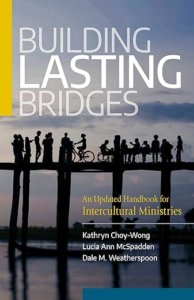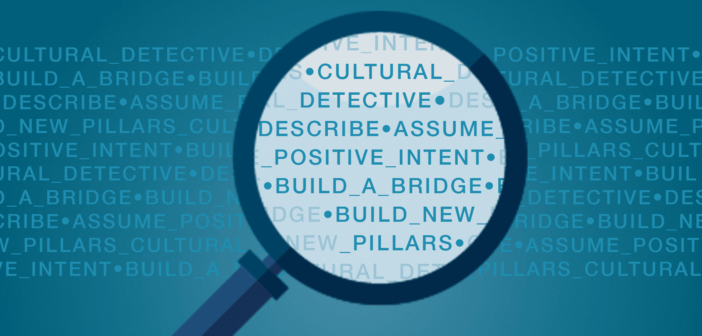Thinking of yourself as a “cultural detective” is a way to expand your appreciation, sensitivity, and respect for others and build bridges that span human diversity. Lucia Ann McSpadden, one of the authors of Building Lasting Bridges: An Updated Handbook for Intercultural Ministries, outlines four tools for analyzing intercultural interactions.
As you seek to grow in your understanding of yourself as an ethnic or cultural being and develop a deeper appreciation, sensitivity, and respect for others, apply these four tools for understanding and enhancing intercultural interactions. Then, with God’s guidance and your own commitment, you can truly build bridges among God’s human diversity toward a Beloved Community.
1. Describe.
The first important action is to describe as clearly as possible what happened. What behavior did you see? What words did the persons involved use? How and when did they speak and to whom? What facial expressions did you notice and by whom? Overall, does your description match what a video with sound would show?
You may notice that many words are highlighted in italics. Using italics helps point out the challenge that we face when we try to describe an observation without adding our meaning to the description. Taking the leap to interpretation is so natural that it would seem that our cultural values are hard wired. However, what is essential is that we only describe literally what we observe because we do not know the meaning given to the other person’s behavior or action. If we are disciplined to just observe, then giving a literal description is easier to do. When we are engaged as participants, observing is more challenging so discipline is critical.
2. Assume positive intent.
Assume positive intent of all involved. Investigate to discover what values and beliefs might be underlying the actions descripted. A first approach could be to sit with the description and brainstorm (either by yourself or with others) the possible values. Of course, brainstorming this way is limited by one’s knowledge and experience. If you, yourself, are part of the situation, self-awareness is critical. In fact, even if you are an outside observer, being self-aware will help you to be insightful. Again, a bridge person is incredibly helpful. When you feel reasonably satisfied with what you have determined to be the possible values guiding the behavior or action of persons involved, the next step will be even more dynamic.
3. Build a bridge.
The question now becomes what might be ways to build a bridge so that all persons experience that their values and beliefs are being recognized and respected.
Let’s picture a bridge over a body of water. For the bridge to function safely, the pillars on each end need to be firmly grounded. The same is true here. The beliefs and values of the persons are the pillars that will support the bridge to relationships and mutual regard.
However, some compromises will be necessary in order to build strong pillars. Call on creativity. Open your mind to possible options by engaging more minds to allow more ideas to flow. Think of persons who might work with you on this because when you are involved in the situation and considering alternatives that you can feel good about, having persons to explore with you in a supportive way is helpful.
4. Build new pillars.
In some situations, you or others may be able to try out building the pillars for the bridge and the solutions you or others think would be effective. If the result is positive, celebrate. If not, go back to the basics with new information.
 Excerpted from Building Lasting Bridges: An Updated Handbook for Intercultural Ministries by Kathryn Choy-Wong, Lucia Ann McSpadden, Dale M. Weatherspoon, Judson Press, 2022. Used by permission. The book is available through Judson Press, Cokesbury, and Amazon.
Excerpted from Building Lasting Bridges: An Updated Handbook for Intercultural Ministries by Kathryn Choy-Wong, Lucia Ann McSpadden, Dale M. Weatherspoon, Judson Press, 2022. Used by permission. The book is available through Judson Press, Cokesbury, and Amazon.
Related Resources
- The Transformative Power of Listening by Mary Clark Moschella
- Multicultural Fluency and the Discipline of Dialogue by Curtiss Paul DeYoung
- Telling a More Inclusive Story by Amanda Poppei







